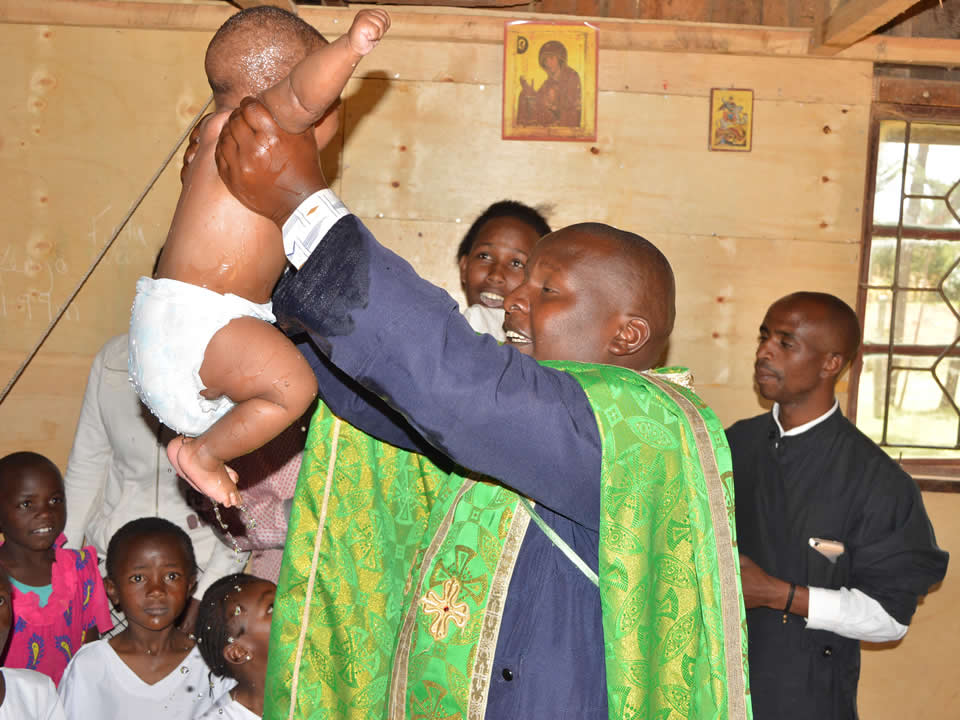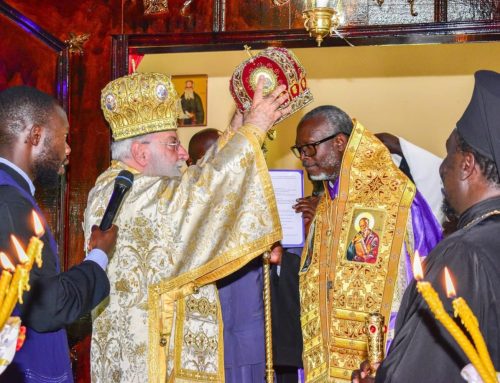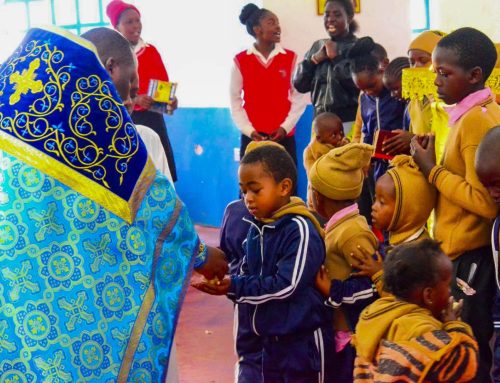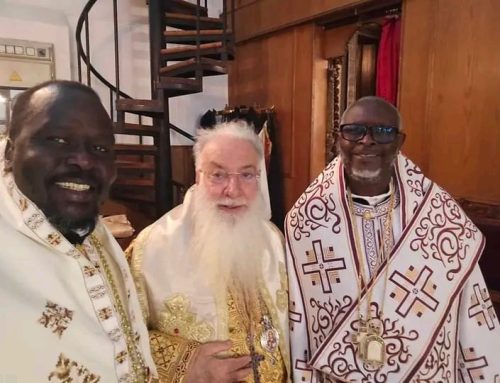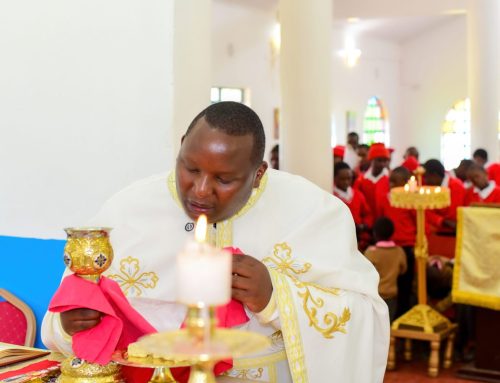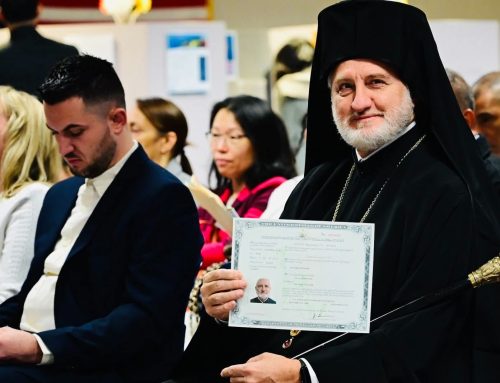The purpose of Holy Baptism
- To remove the consequences of the ‘original sin’.
- To wash away all other sins committed before the time of Baptism if the person is beyond the age of infancy.
- To unite the person to “The Body of Christ” (that is, the Church), and to open the door of salvation and eternal life to him or her.
http://www.stireneorthodoxmission.org/get-invloved
The Baptismal font
The baptismal font in the language of the Church Fathers is the Divine Womb whence we receive the second birth as children of God. Baptism is truly a birth.
“But to all who received him, who believed in his name, he gave power to become children of God; who were born, not of blood, nor of the will of the flesh, nor of the will of man, but of God” (John 1:12-13).
When a person is Baptised, they descend into the baptismal font. As the water closes over the head, it is like being buried in a grave. When the newly baptised emerges from the water, it is like rising from the grave. Baptism represents our old, sinful nature dying and then being resurrected again by Christ in a new and cleansed form. As St. Paul says, “Do you not know that all of us who have been baptised into Christ Jesus were baptised into his death. We were buried therefore with him by baptism into death, so that as Christ was raised from the dead by the glory of the Father we, too, might walk in newness of life” (Romans 6:3-4).
http://www.stireneorthodoxmission.org/donate
Immersion into the Baptismal font
In obedience to Christ’s words, the Priest Baptises the child with the words,
“The servant of God (name) is baptised in the name of the Father. Amen. And of the Son, Amen. And of the Holy Spirit, Amen”.
At each invocation the Priest immerses and then raises the infant up again. After the Baptism the Priest places the child in a new linen sheet held by the Godparent.
The Sacrament of Chrismation
In the Orthodox Church the Sacrament of Chrismation (known sometimes as Confirmation) is administered immediately following Baptism as in the early Church. It is considered the fulfilment of Baptism. The Priest anoints the newly baptised infant with the Holy Chrism saying,
“the seal of the gift of the Holy Spirit, Amen”.
The whole man is now made the temple of God and the whole body is consecrated to the service of God. According to Orthodox belief every baptised lay person is consecrated by this Sacrament; he receives the gift of the Holy Spirit to become a deputy or an ambassador for Christ in this world.
New clothes
Following the Sacrament of Chrismation the Priest then invests the newly Baptised child in a new robe or garment, saying,
“Clothed is the servant of God (name) with the garment of righteousness, in the Name of the Father, and of the Son, and of the Holy Spirit, Amen”.
The new clothes signify the entirely new life that we receive after we are “buried with Jesus in His death” (Romans 6:4). Traditionally, the new white garment expresses the purity of the soul that has been washed from sin. It recalls also the shining robe in which Christ appeared at the Transfiguration. There is now a likeness between the one baptised and the transfigured Lord. St. Paul calls it a putting on of Christ,
“For as many of you as have been baptised in Christ, have put on Christ” (Galatians 3:26-27). “Therefore, if any one is in Christ, he is a newcreation; the old has passed away, behold the new has come” (2 Corinthians 5:17).
Donate Now to buy New Clothes for the Needy kids in St Irene Orthodox Mission Center & Orphanage
The Holy Eucharist
Immediately following Baptism and Chrismation the neophyte becomes a full member of the Orthodox Church. As such, the child is now entitled to receive the precious Body and Blood of Christ in the Sacrament of Holy Communion (or Holy Eucharist). The new life in Christ, given in Baptism, is renewed again and again in the Eucharist. As nature provides milk for the nourishment of the infant after birth, so God provides Holy Communion for the infant immediately following Baptism in order to provide nourishment for the spiritual life the neophyte has received through Baptism.


